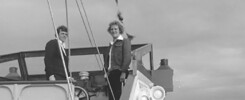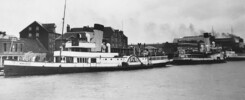Sixty years ago, 1949 was not a good year for UK paddle steamers with no less than five withdrawn and ultimately scrapped: Dundee, Lucy Ashton, Monarch, Duchess of Cornwall and Golden Eagle.
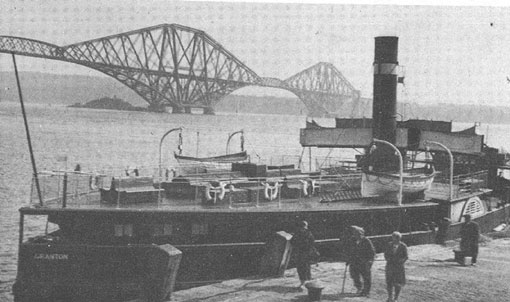
The oldest of the five was the Dundee (pictured above) which had been built in 1875 for the passenger and vehicle ferry service on the Tay between Dundee and Newport. Displaced by newer tonnage in 1917 she moved to the Firth of Forth to take up the railway ferry service between North and South Queensferry where she remained in regular employment until the arrival of the new Diesel electric paddle ferries Queen Margaret and Robert the Bruce in 1934. She continued as spare and relief vessel until 1949 when the new Mary Queen of Scots arrived to take her place. She was scrapped in 1951.
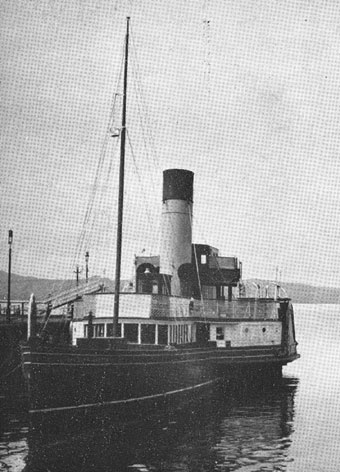
Joint second oldest were the Clyde based Lucy Ashton (pictured above at Craigendoran) and the South Coast Monarch, both dating from 1888. Lucy Ashton spent her entire career ferrying passengers backwards and forwards around the Clyde Piers. She was a constant presence and reliable stalwart even during the dark days of the Second World War when she maintained many of the upper Clyde services sometimes single handed as larger and more sea-going members of the fleet were commandeered for war service. Withdrawn in February 1949 her hull had a second but brief incarnation for use testing experimental jet engines before being finally being scrapped in 1951 at Faslane.
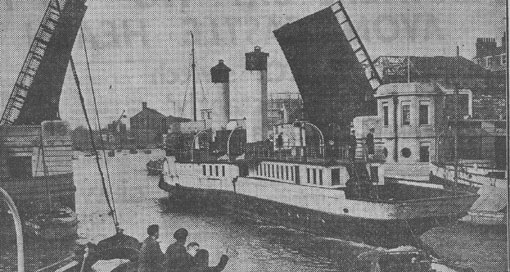
When Cosens commissioned the Monarch (pictured above passing through the Town bridge at Weymouth) in 1888, she was their crack long distance steamer even sailing across the English Channel on excursions to Cherbourg and Alderney. But, as newer paddlers joined the fleet, she lost most of her longer runs and became ever more associated with the Bournemouth to Swanage service on which she spent the vast majority of her peacetime career right up to her last season in 1949. In February 1950 she was towed away for scrapping at Milford Haven.
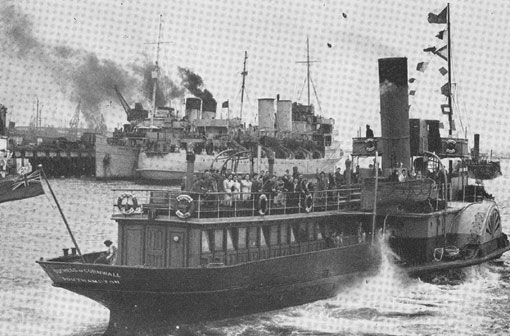
The Duchess of Cornwall (pictured above leaving the Royal Pier at Southampton) was built in 1896 for the Southampton, Isle of Wight and South of England Royal Mail Steam Packet Company (later christened Red Funnel Steamers) ferry services from Southampton to Cowes, Ryde and Southsea, for tendering in the Solent and for local excursions. Latterly she worked pretty much exclusively on the Cowes ferry until withdrawn in November 1949. She was scrapped locally in March 1950.
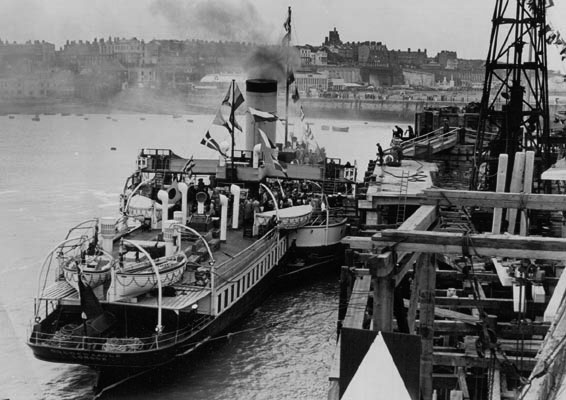
The Golden Eagle (pictured above at Ramsgate) came out in 1909 for the General Steam Navigation Company’s Thames services and was most particularly associated with the London to Southend, Margate and Ramsgate route. She was called “The Happy Ship” in the publicity material and was targeted at the family market segment providing lots to do aboard for children including balloon blowing contests, jumping, skipping and other party activities. After distinguished war service she returned to her old route in 1947 and was withdrawn after the 1949 season. She was scrapped at Grays in Essex in 1951.
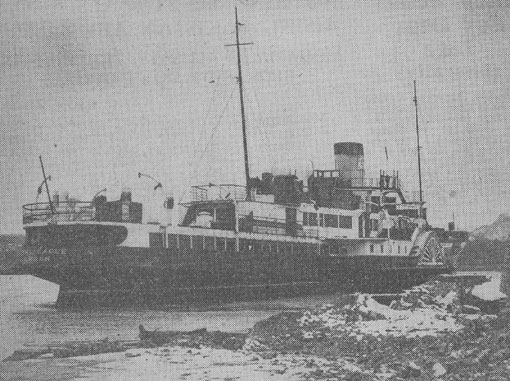
It was not a good time for Thames paddlers as the following year the Golden Eagle’s consort, Royal Eagle, built in 1932, lasted for only part of one more season, running from London to Clacton until 10th August 1950 only. She was the final development of the UK excursion paddle steamer. At 1,539 tons she was twice the size of our Waverley and five times bigger than the Duchess of Cornwall. Billed as “London’s Luxury Liner” and fitted out to a very high standard, she had the largest amount of undercover accommodation on any British excursion paddle steamer ever and was marketed towards a more moneyed clientele with her fares sometimes three times as high as those for the same trip on the same route on the same day on the Golden Eagle. Apart from war service and her last summer, she spent almost all the rest of her Thames career running from London to Southend, Margate and Ramsgate. After finishing the 1950 season early as passenger loadings were not as high as anticipated, she then languished in Whitewall Creek at Chatham (pictured above), just over the river from Kingswear Castle’s berth, until finally scrapped at Grays in 1953.
All these paddle steamers withdrawn in such a short space of time is a pretty dismal thing. But the pill was sweetened as all had replacements, if not directly, then of a sort. Dundee’s role was made superfluous by the arrival of the brand new Mary Queen of Scots, although Diesel powered, still paddle driven. The building of the Waverley in 1947 and the subsequent rationalisation of the Clyde services led to the demise of the Lucy Ashton. Cosens bought the Portsmouth to Ryde paddle steamer Shanklin to replace the Monarch and gave her the same name. Duchess of Cornwall’s departure was prompted by the arrival of the new Balmoral. And the withdrawal of the Golden Eagle and Royal Eagle coincided with the introduction of the new and huge Diesel vessels Royal Sovereign and Queen of the Channel. So it was not entirely bad news.
Perhaps saddest though was the scrapping of the Royal Eagle which had had a pitifully short career as a Thames excursion steamer. Of course she was very big and that brings its own operating problems of filling her and making her pay. But nonetheless she was a groundbreaking paddler in her day both in size and amenity.
Traditionally excursion paddle steamers had lots of open decks from which the health giving properties of fresh sea air could readily be enjoyed. But when it rained and blew it was a different story. And as the generations have moved on passengers have become ever less inclined to see the benefits of sitting out in the rain and watching their hats being being blown away by gales. Today, it is often hard to find much open deck at all on ferries as passengers are corralled into air conditioned spaces with plate glass windows. Of course this is not so good for those who do like to be in touch with the elements but it does seem to go down rather well with the majority of travellers. The Royal Eagle was the first UK excursion paddle steamer to set out to address this issue seriously.
Capt Mike Ledger has sent in this fascinating picture of the Lucy Ashton minus her steam engine, superstructure and paddle wheels, proceeding down the Clyde in her new and brief incarnation as a test jet powered ship for the British Shipbuilding Research Association in 1951. Wow! I wonder why this method of ship propulsion never took off?!
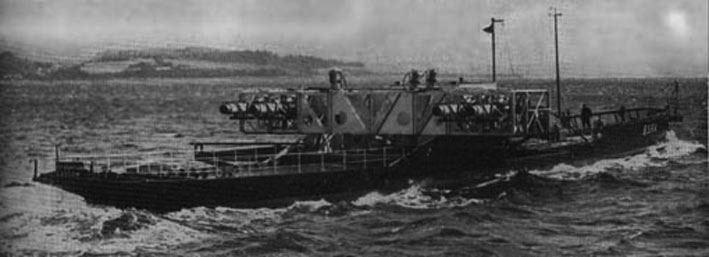
Kingswear Castle returned to service in 2023 after the first part of a major rebuild which is designed to set her up for the next 25 years running on the River Dart. The Paddle Steamer Kingswear Castle Trust is now fund raising for the second phase of the rebuild. You can read more about the rebuilds and how you can help if you can here.
John Megoran

